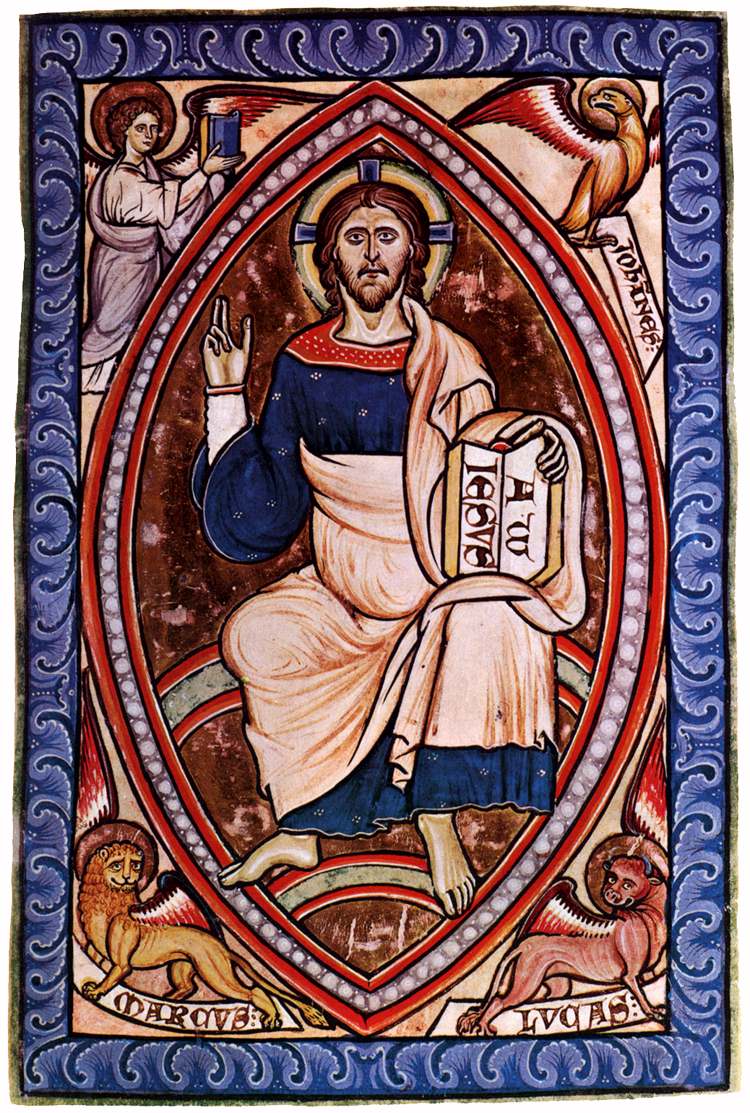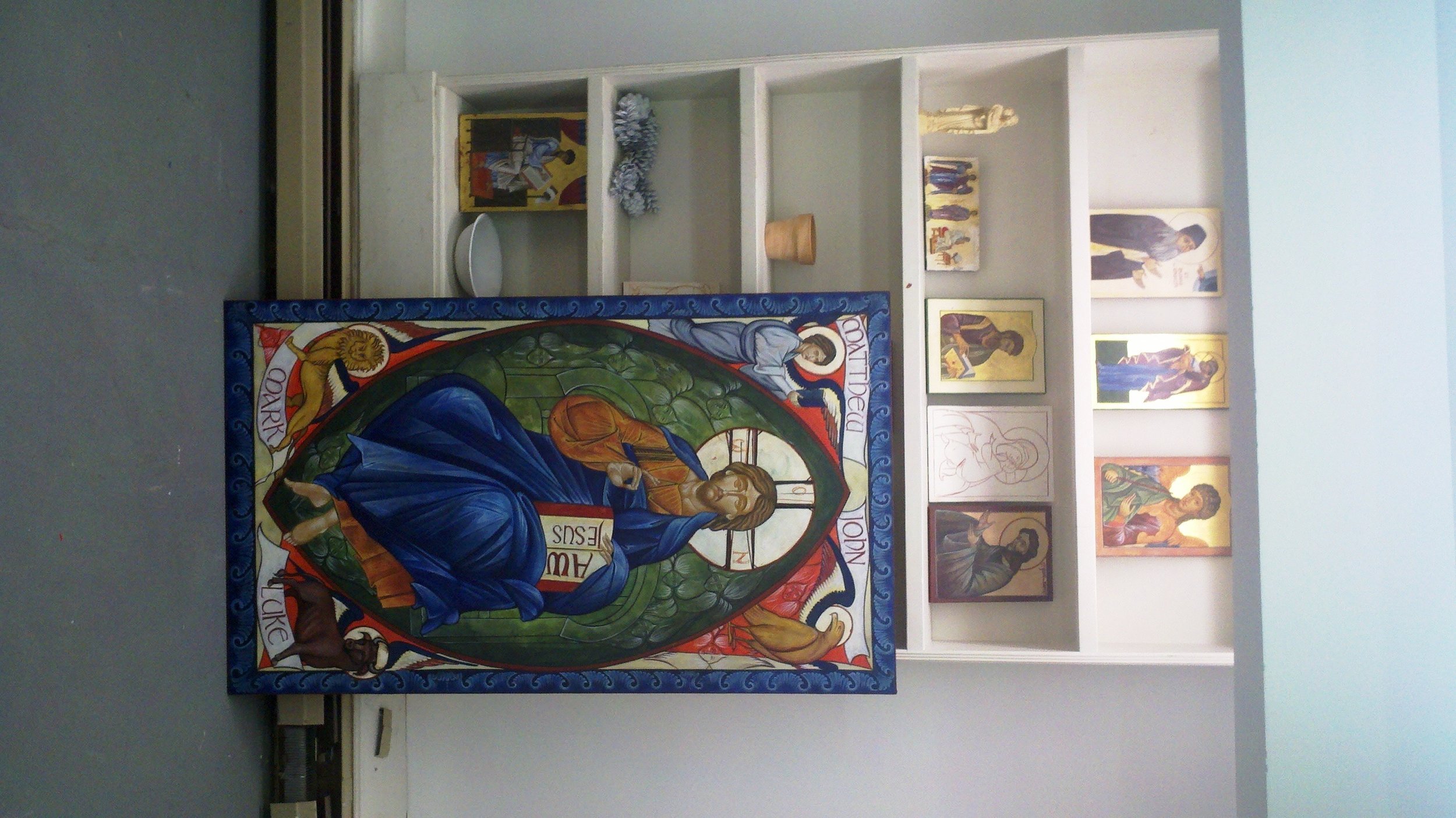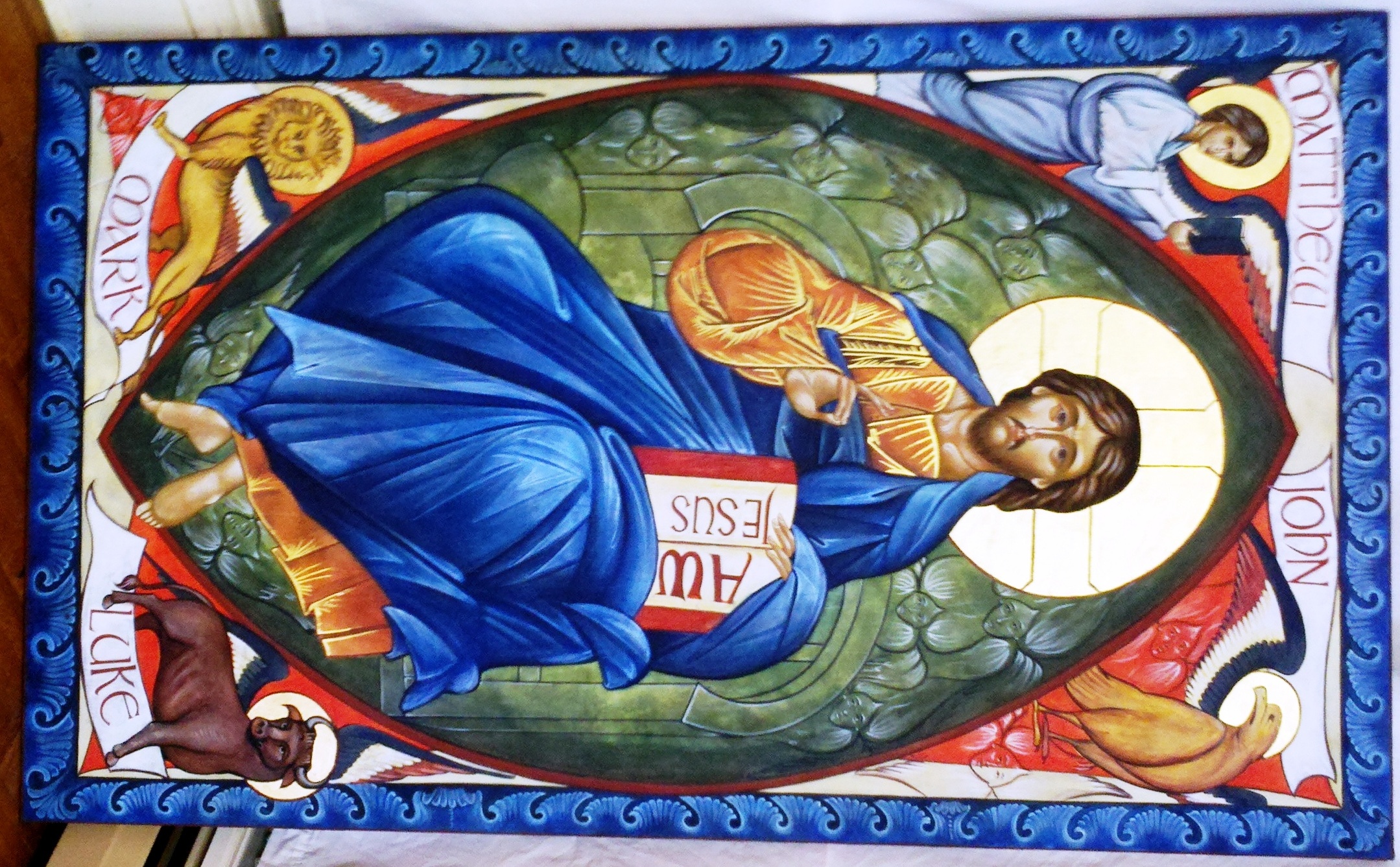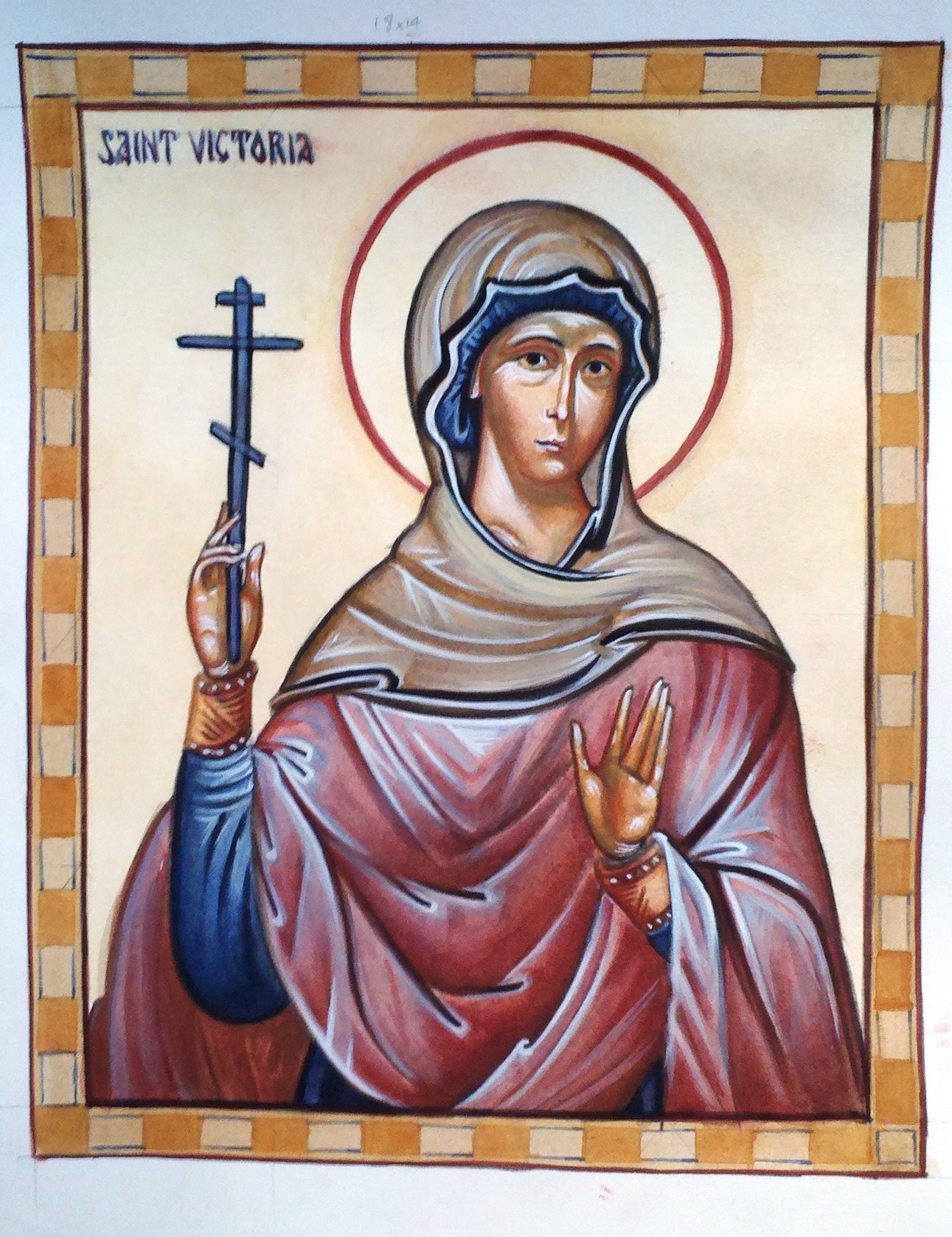I am delighted that Sophia Institute Press is going to use my painting of St Michael for the cover of an upcoming book, Spiritual Warfare and the Discernment of Spirits, which will be published next month. Charlie McKinney of Sophia Institute Press told me that he chose it because he likes the sense of effortlessness ease with which St Michael deals with evil personified, the Devil.
Painting of St Joseph
The Theology of Taking Your Clothes Off in Class and Painting Naked People
Contrary to what many people think, and in accordance with Christian tradition, John Paul II was conservative in his approach to the portrayal of the nude in art. He told us that it is only appropriate to portray man naked when shining the with the uncreated light of Christ. In short if we can't show man clothed in glory, show him clothed...in clothes!
Some Recently Completed Sacred Art
 Here are two recently completed works of my own. The first is my own version of a Western iconography. It is Christ in Majesty and will go into the chapel at Thomas More College in Merrimack. I have created the basic design on a Romanesque illuminated manuscript. Christ is enthroned in heaven in glory, surrounded by the six winged seraphim and the four angels representing the four evangelists take the Word to the four corners of the world. In considering how to do this, I felt that in this the figure's sitting pose in the original is too unnatural and primitive for the modern eye. So I looked to the 20th century Russian iconographer, Gregory Kroug for the basis of the central figure. Kroug is interesting to study. Although the form is highly stylised, he was a very skilled draughtsman who placed the relative positions of limbs and torso accurately to reflect the gesture he wanted to show. The third inspiration for me is a 16th century Christ in Majesty that I saw at the Museum of Russian Icons in Clinton, Massachusetts in which the six winged seraphim who surround the throne are portrayed in monochrome in a deep green background. And finally, the face is my own style, but heavily influenced by my teacher, Aidan Hart, the British iconographer. I started this painting over the Christmas break and finished it in early May. The panel upon which it is painted is about six feet long.
Here are two recently completed works of my own. The first is my own version of a Western iconography. It is Christ in Majesty and will go into the chapel at Thomas More College in Merrimack. I have created the basic design on a Romanesque illuminated manuscript. Christ is enthroned in heaven in glory, surrounded by the six winged seraphim and the four angels representing the four evangelists take the Word to the four corners of the world. In considering how to do this, I felt that in this the figure's sitting pose in the original is too unnatural and primitive for the modern eye. So I looked to the 20th century Russian iconographer, Gregory Kroug for the basis of the central figure. Kroug is interesting to study. Although the form is highly stylised, he was a very skilled draughtsman who placed the relative positions of limbs and torso accurately to reflect the gesture he wanted to show. The third inspiration for me is a 16th century Christ in Majesty that I saw at the Museum of Russian Icons in Clinton, Massachusetts in which the six winged seraphim who surround the throne are portrayed in monochrome in a deep green background. And finally, the face is my own style, but heavily influenced by my teacher, Aidan Hart, the British iconographer. I started this painting over the Christmas break and finished it in early May. The panel upon which it is painted is about six feet long.
 The second is an icon of St Victoria. I chose this subject because I painted it to give to a friend for the baptism of her baby daughter, Victoria. It is much smaller, about 10 inches long and painted on good quality watercolour paper. This took me about eight hours to paint. St Victoria according to the source I read, died in 304 and lived in Italy. When she refused marriage and to sacrifice to pagan gods because of her faith, she was martyred (that is why she is holding a cross in the icon). The guard converted because of her witness to the faith and was himself martyred.
The second is an icon of St Victoria. I chose this subject because I painted it to give to a friend for the baptism of her baby daughter, Victoria. It is much smaller, about 10 inches long and painted on good quality watercolour paper. This took me about eight hours to paint. St Victoria according to the source I read, died in 304 and lived in Italy. When she refused marriage and to sacrifice to pagan gods because of her faith, she was martyred (that is why she is holding a cross in the icon). The guard converted because of her witness to the faith and was himself martyred.
It is interesting to not that my source makes two observations. First is that very little is known about her life, and secondly that the story that we do have is 'probably a pious myth, though they did actually live'. I would love know why this final comment is made. I might be wrong, but the word 'probably' makes this sound like the historical-critical method at work to me. Historical-critical analysis is an overly skeptical form of analysis that assumes that something is untrue unless confirmed by historical evidence. So by this method, the main source of this information, which is tradition, is not accepted as a valid source of information. I prefer to work the other way around and assume that tradition is true unless proven otherwise. So in the absence of any other information I say wholeheartedly, St Victoria pray for us!










